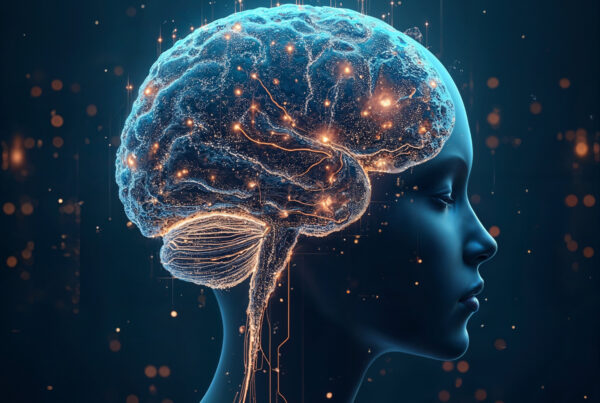In the clinical study titled Efficacy of ketamine therapy in the treatment of depression published in the Indian Journal of Psychiatry, researchers Mandal, Sinha, and Goyal explored whether subanesthetic doses of intravenous ketamine could produce rapid and sustained antidepressant effects in individuals with severe depression. With treatment-resistant depression posing a serious challenge in India and worldwide, this study offers compelling evidence that ketamine may offer not only immediate symptom relief but also durable improvements extending weeks beyond the final dose.
For decades, traditional antidepressants have been the mainstay in treating major depressive disorder (MDD). However, these therapies often take weeks to show benefit and fail in a substantial subset of patients. This gap in rapid, effective treatment options has driven the global scientific community to explore alternatives—among which ketamine has emerged as a front-runner.
Study Design: A Focus on Drug-Free, Treatment-Naïve Patients
This prospective study involved 25 treatment-naïve, drug-free male patients diagnosed with severe depression. Each participant received six infusions of ketamine (0.5 mg/kg) administered intravenously over two weeks. What set this study apart was its inclusion criteria, which ensured participants were not confounded by ongoing antidepressant treatments, allowing for a clearer interpretation of ketamine’s true therapeutic effects.
Assessments of depressive and anxiety symptoms were made at several key time points:
- At baseline
- One hour after the first infusion
- Following each treatment session
- One month after the final dose
Standardized rating scales were used to assess the severity of depression, anxiety, and overall illness.
Rapid and Sustained Response
The findings were striking. Just one hour after the first ketamine infusion, patients showed significant reductions in both depression and anxiety scores. This rapid onset of action supports prior global research and adds to the growing body of evidence suggesting ketamine’s unique mechanism is markedly faster than conventional antidepressants.
At the end of the two-week course, and again one month later, patients maintained significantly improved scores in all measured domains:
- Depression: Substantial drop in severity by standard clinical scales
- Anxiety: Parallel reductions observed alongside depressive symptoms
- Overall illness severity: Notable improvements by the end of the full treatment course
While mild, transient adverse effects (such as dizziness or disorientation) were observed, these typically resolved within one hour of infusion. There were no serious or lasting side effects reported.
Mechanism and Interpretation
Ketamine is believed to act on NMDA receptors in the brain, triggering downstream effects that enhance glutamate signaling and stimulate the release of brain-derived neurotrophic factor (BDNF). This helps repair synaptic connections damaged by chronic stress and depression. The speed and strength of this process likely explain the rapid relief reported by participants.
Additionally, the Indian study supports growing interest in serial ketamine infusions—that is, repeated doses over time—as a way to extend ketamine’s antidepressant benefits. The sustained response observed at one-month follow-up implies a possible cumulative neuroadaptive benefit from ongoing exposure.
Relevance to India and Global Psychiatry
India faces increasing rates of depression with limited access to specialized mental health care, especially in rural areas. Standard antidepressants are not always effective and require long-term adherence. The results of this study suggest ketamine could be an efficient adjunct or alternative, particularly for cases that have not responded to traditional treatments.
Moreover, the use of treatment-naïve individuals in this study eliminates a major source of confounding bias, adding strength to the data. It also reflects a relatively unexplored population in psychiatric trials, expanding the cultural and demographic relevance of ketamine research.
Limitations and Considerations
While promising, this study had several limitations:
- Small sample size: Only 25 participants, all male, limits generalizability
- Open-label design: Lack of placebo control could introduce expectancy bias
- Short follow-up period: Only one-month data were collected; longer-term effects are unknown
Future research could address these gaps by incorporating:
- Larger, more diverse cohorts (including female participants)
- Randomized controlled designs
- Longitudinal follow-up over 3–6 months or more
Conclusion
This proof-of-concept study from India underscores ketamine’s potential as a rapid-acting, sustained antidepressant. Within hours of a single dose, patients experienced meaningful relief—a result not commonly seen with traditional medications. And with six sessions over two weeks, benefits persisted for a month.
These findings make a compelling case for integrating ketamine into depression treatment strategies, especially in populations underserved by conventional psychiatry. As India and the global mental health community seek faster, more reliable interventions for severe depression, ketamine may represent a critical step forward.
References
- Mandal S, Sinha VK, Goyal N. Efficacy of ketamine therapy in the treatment of depression. Indian J Psychiatry. 2019;61(5):480-485. doi:10.4103/psychiatry.IndianJPsychiatry_484_18
- Aan Het Rot M, Zarate CA Jr, Charney DS, Mathew SJ. Ketamine for depression: where do we go from here? Biol Psychiatry. 2012;72(7):537-547.
- Berman RM, Cappiello A, Anand A, et al. Antidepressant effects of ketamine in depressed patients. Biol Psychiatry. 2000;47(4):351-354.
- Zarate CA, Singh JB, Carlson PJ, et al. A randomized trial of an N-methyl-D-aspartate antagonist in treatment-resistant major depression. Arch Gen Psychiatry. 2006;63(8):856-864.
- Krystal JH, Abdallah CG, Sanacora G, et al. Ketamine: A paradigm shift for depression research and treatment. Neuron. 2019;101(5):774–778.




